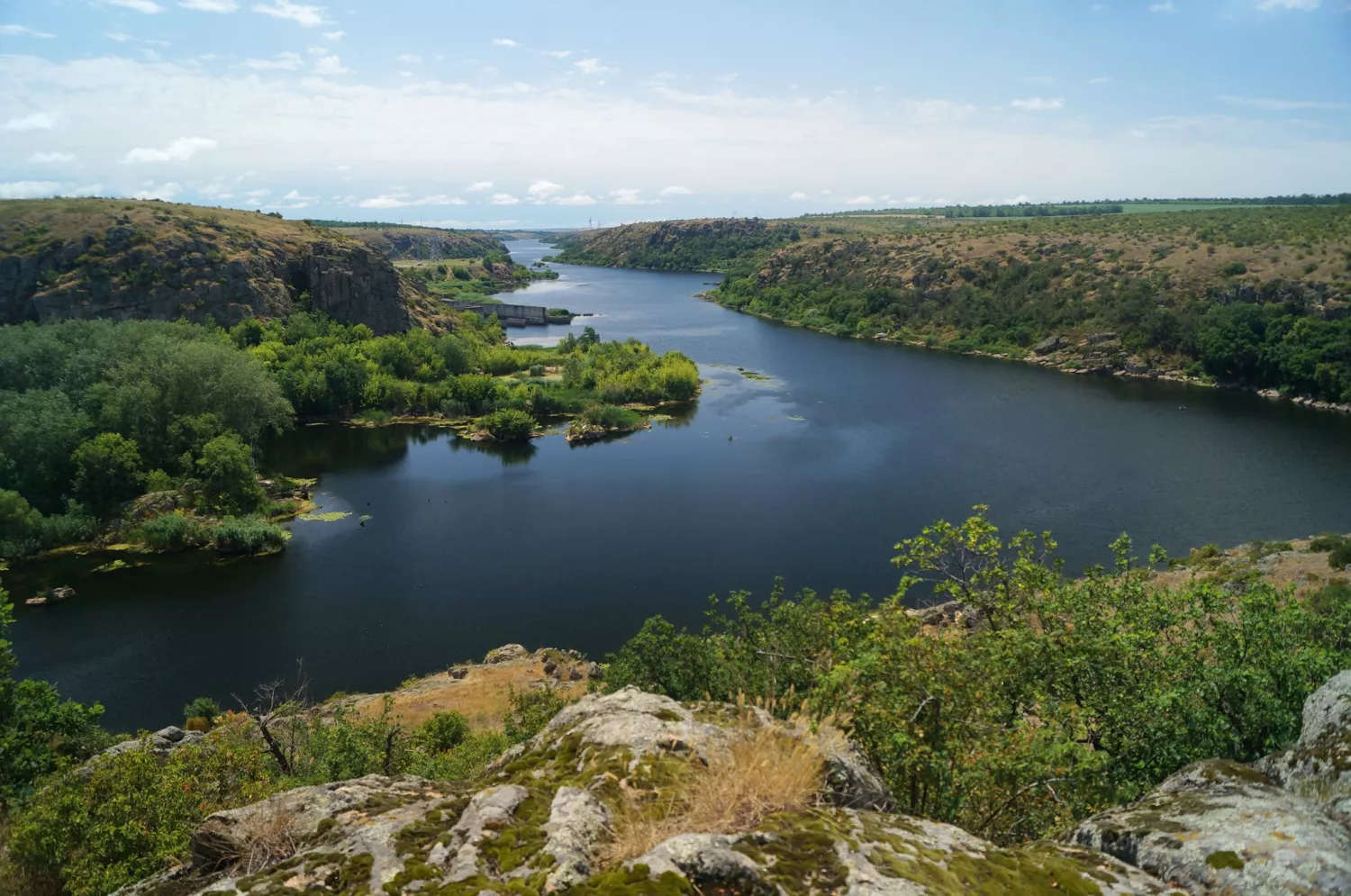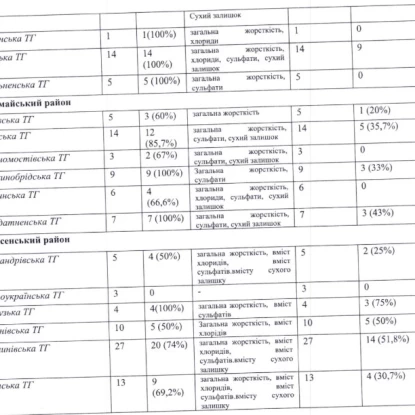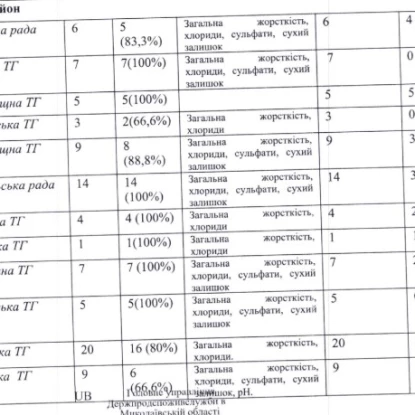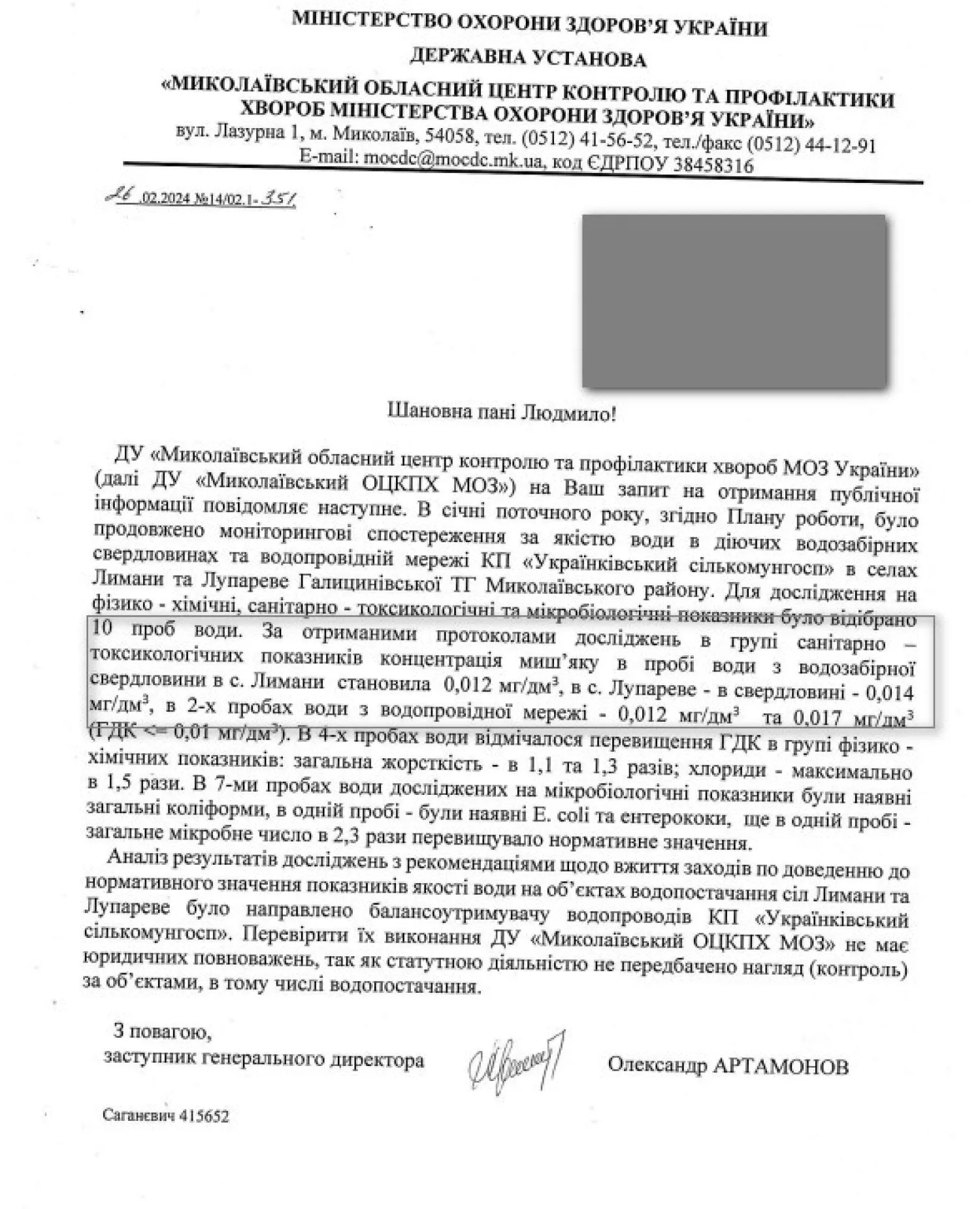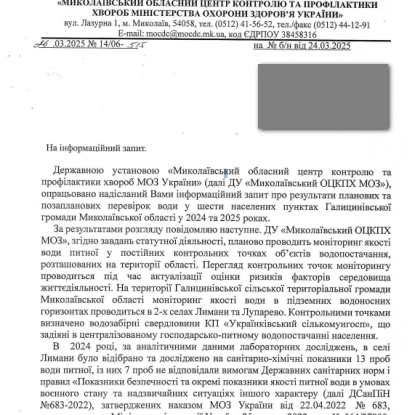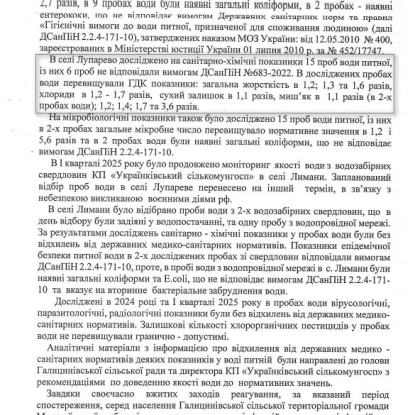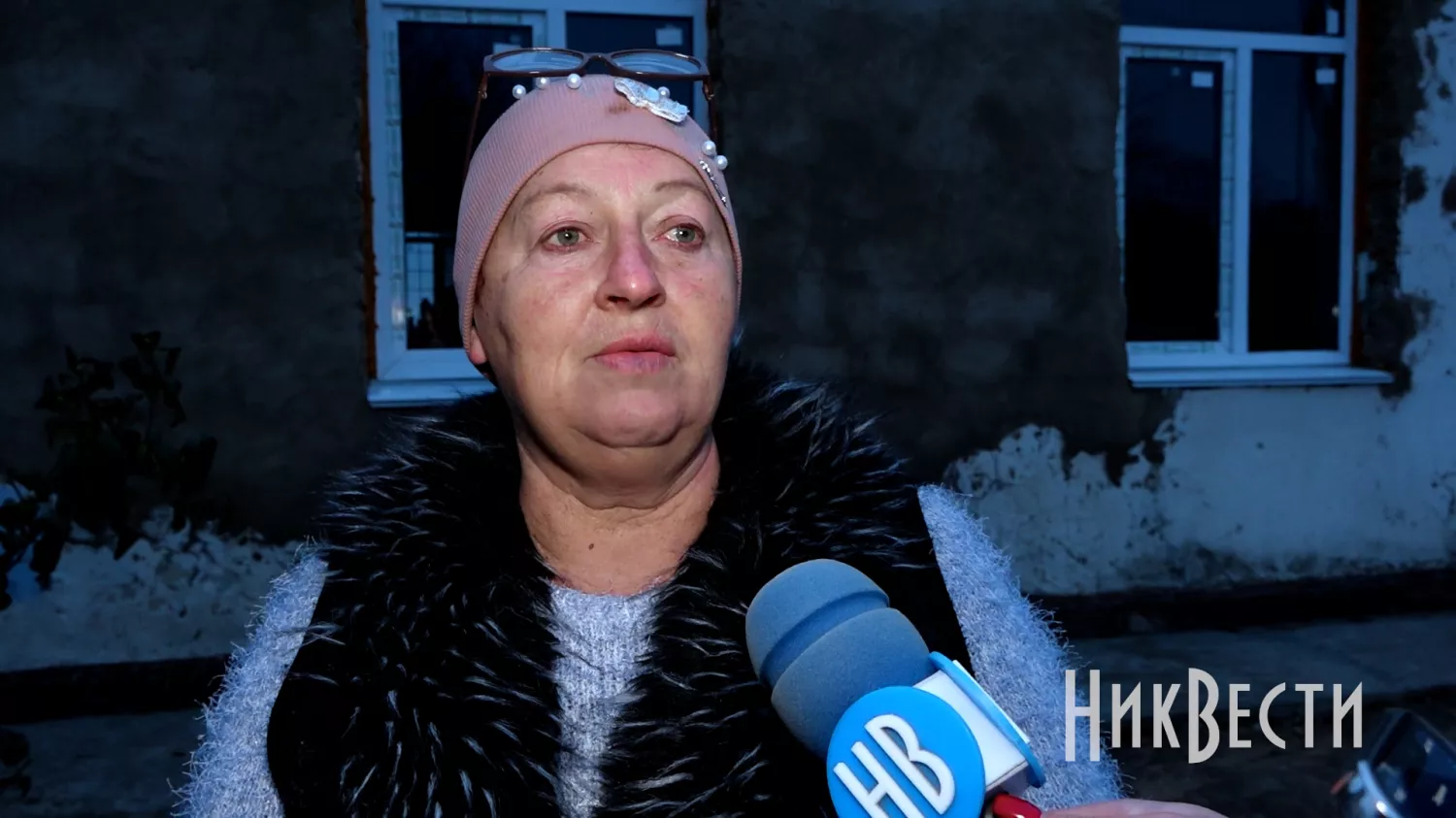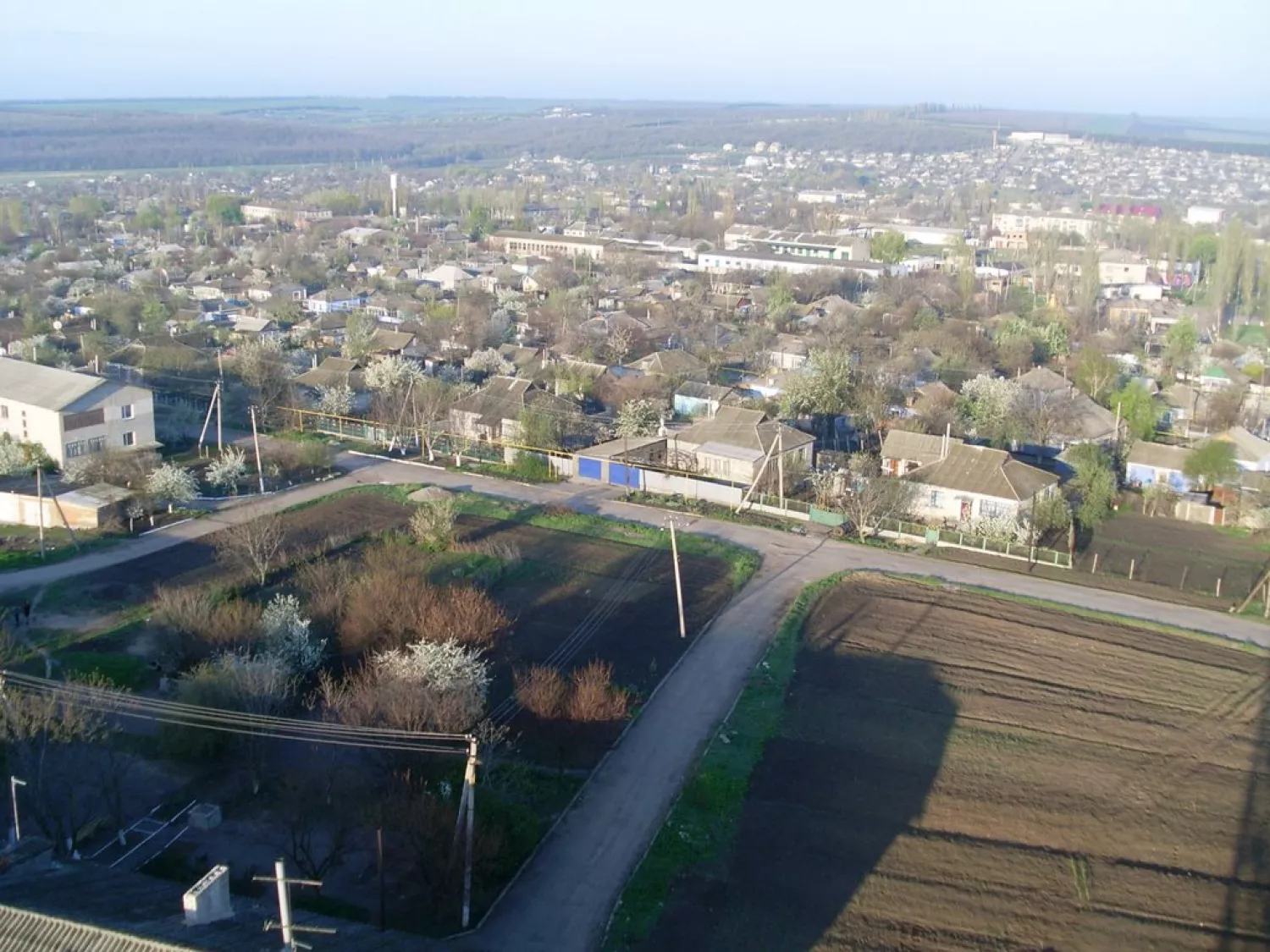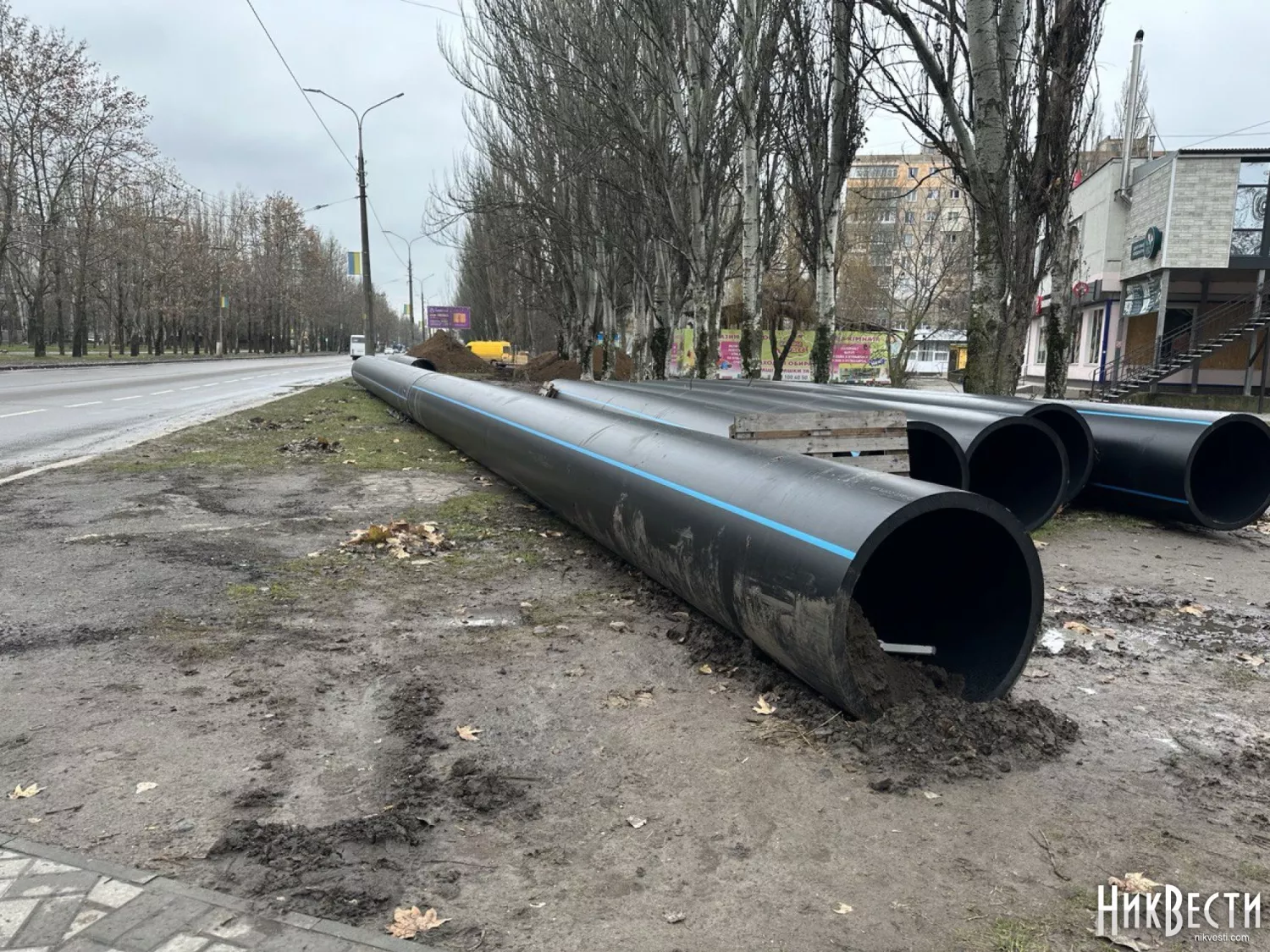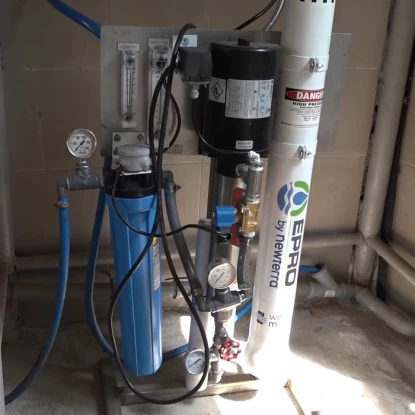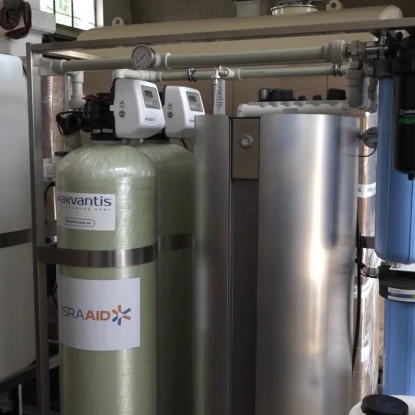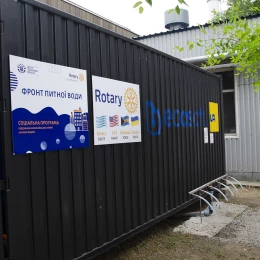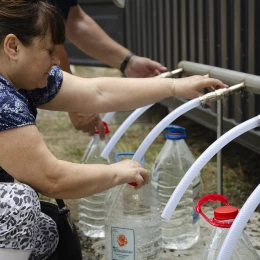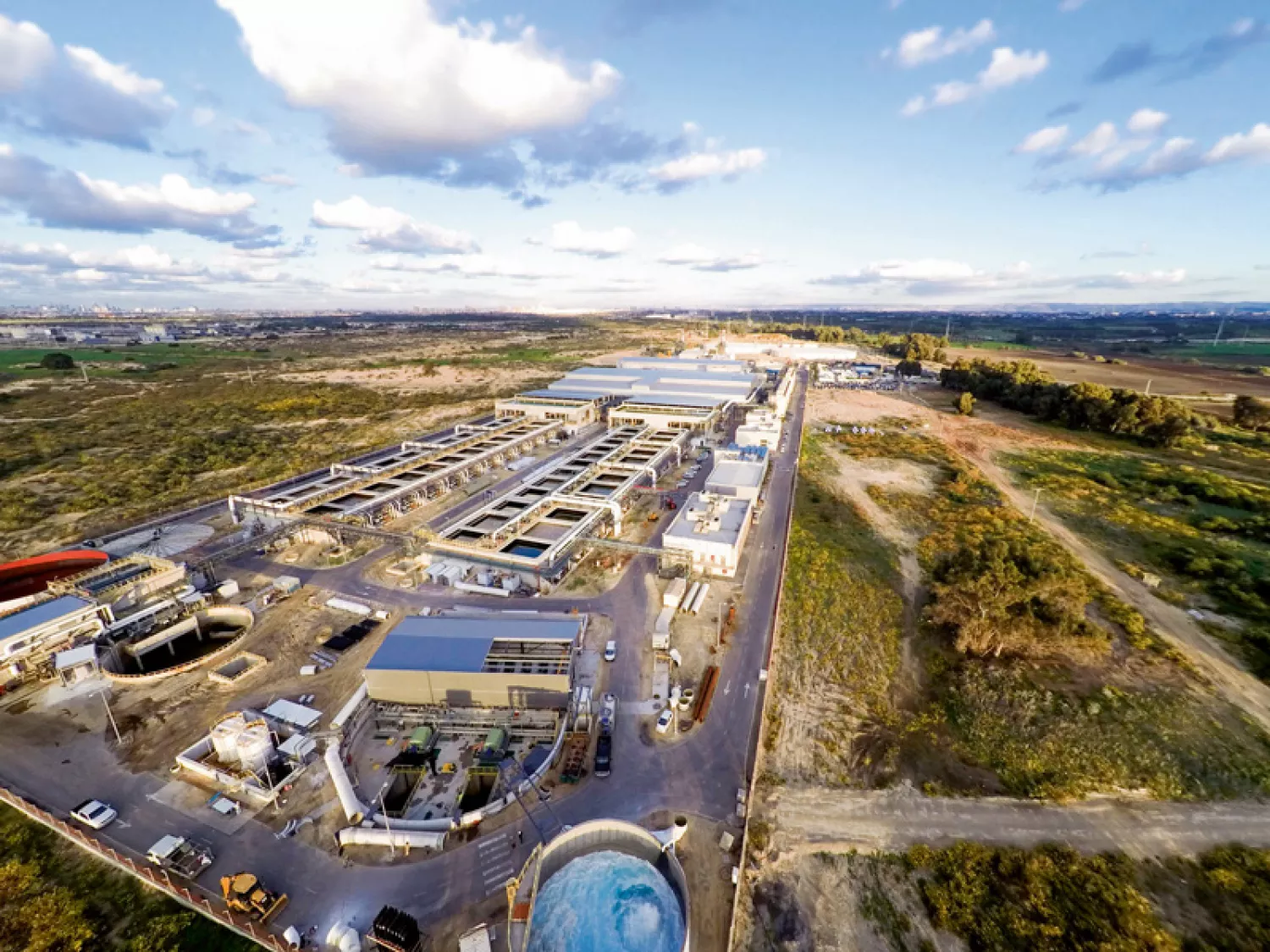Drinking Trouble: Why tap water in Mykolaiv Region poses a risk
- Alona Kokhanchuk
-
•
-
17:25, 04 April, 2025
Water is the basis of life and its quality is very important. Water supply problems remain a pressing issue for Ukrainian communities, particularly in the Mykolaiv region. Climate change, the war and the destruction of the Kakhovka hydroelectric power station have significantly exacerbated this problem, leaving many communities without access to reliable water sources.
NikVesti decided to find out what kind of water residents of the region consume and how villages and towns are trying to improve the water supply. Read more about why water in the region's communities poses a threat to health in the article below.
What determines water quality?
Speaking about the quality of water drunk by the residents of Mykolaiv region, we must first of all take into account the geographical location of our region. After all, the composition of water directly depends on the natural strata through which it passes.
According to the regional report on the state of the environment in the Mykolaiv region for 2023, five cities in the region are provided with centralised water supply from surface sources (rivers: Pivdennyi Buh, Syniukha, Inhul). However, most rural settlements and district centres in the region use groundwater exclusively for drinking purposes.
The very process of groundwater formation in our region is complicated due to the climate, relief features, types of rocks, their ability to pass water and retain it. Studies show that almost half of the region's total water withdrawal is water with high salinity. In addition, groundwater resources were studied back in Soviet times, and it is difficult to estimate real water reserves.
«This is a feature of our steppe territory, our geological structure. And the composition of the rocks is such that the groundwater itself contains chlorides and sulphates, as well as general hardness due to the content of certain rocks that are washed away and get into the groundwater. Our groundwater at great depths is usually highly mineralised. Most of them contain excessive amounts of sulphates and chlorides», says Inna Tymchenko, Associate Professor of the Department of Gardening and Ecology at Luhansk Taras Shevchenko National University.
Speaking of surface water (rivers, lakes, reservoirs), Mykolaiv region is considered a low-water region, which is located in the zone of insufficient and extremely low water availability. The water quality in the rivers that supply water to the region's communities is also not of the best quality. Water samples taken at 15 monitoring points show that the rivers of Mykolaiv region have exceedances in pH, sodium, magnesium, sulphates, hardness and dry residue.
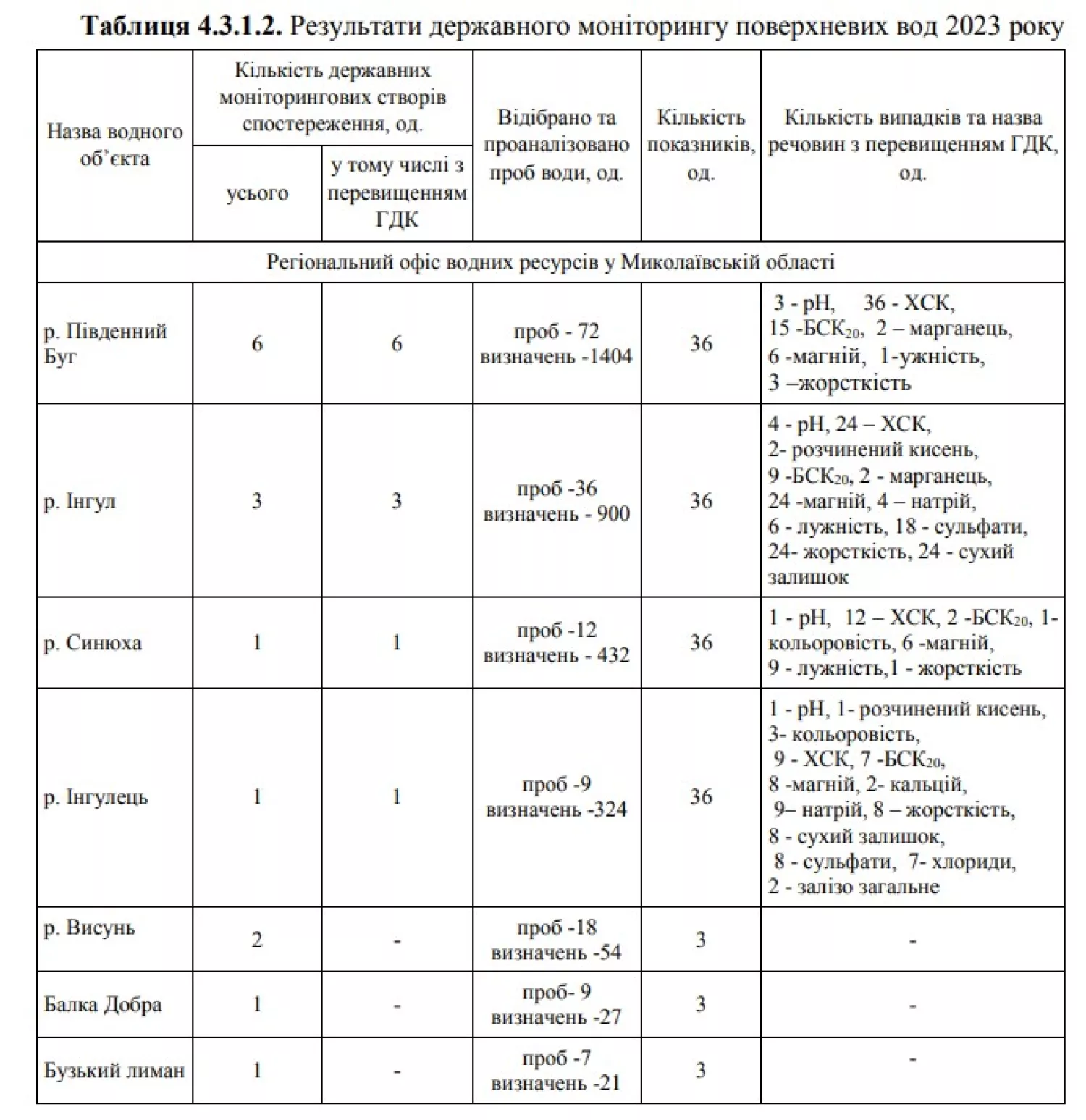 Results of water testing in the region's rivers. Table from the report on the state of the environment in Mykolaiv region
Results of water testing in the region's rivers. Table from the report on the state of the environment in Mykolaiv region «We can see that the situation is the same with surface water in terms of sulphates and chlorides, because all of this is interconnected. Climate change is exacerbating this situation. The greater the evaporation, the greater the mineralisation of water can be. We can also see this in the Southern Bug River, where salinity is increasing towards Voznesensk due to the seawater intake, which means that salinity is increasing. First of all, there is an excess of sulphates and chlorides. This is a process that is difficult to stop because we will not stop climate change. The natural flow of the river will decrease and the resistance of the sea water will increase,» says Inna Tymchenko.
The environmentalist notes that the composition of water in rivers is influenced by many factors, including climate change. The rivers are also heavily influenced by the anthropogenic load, i.e. how people use them. As of 2023, there are 26 enterprises in the Mykolaiv region that use water and then discharge it back into the river.
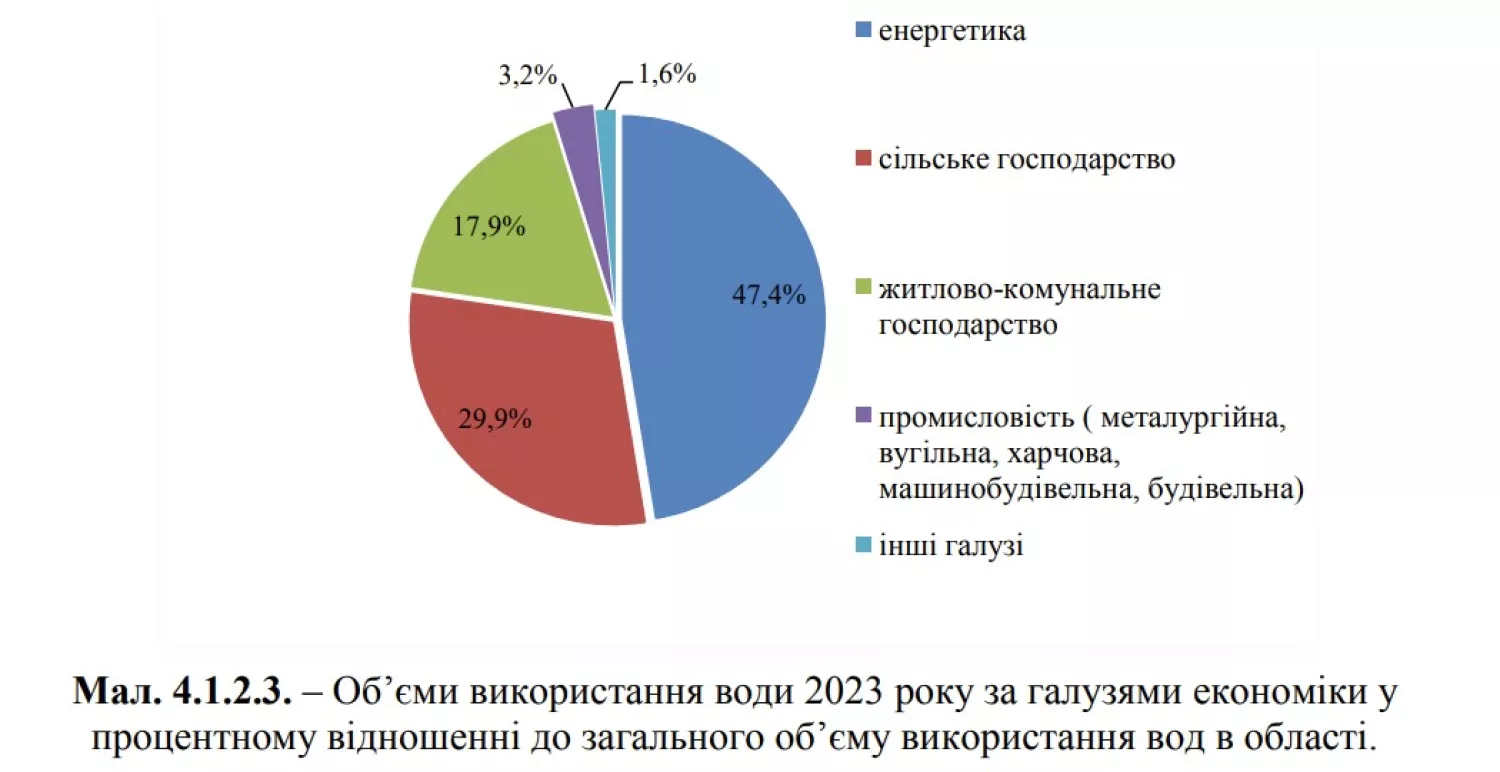 Water use in different industries. Graph from the report on the state of the environment in Mykolaiv region
Water use in different industries. Graph from the report on the state of the environment in Mykolaiv regionThe largest amount of conditionally clean, untreated wastewater in the region is discharged by «South Ukraine NPP» State-owned enterprises «NNEGC «Energoatom», which includes Oleksandrivka HPP and Tashlyk PSP. The rivers also receive contaminated water, or insufficiently treated water, from the activities of public utilities.
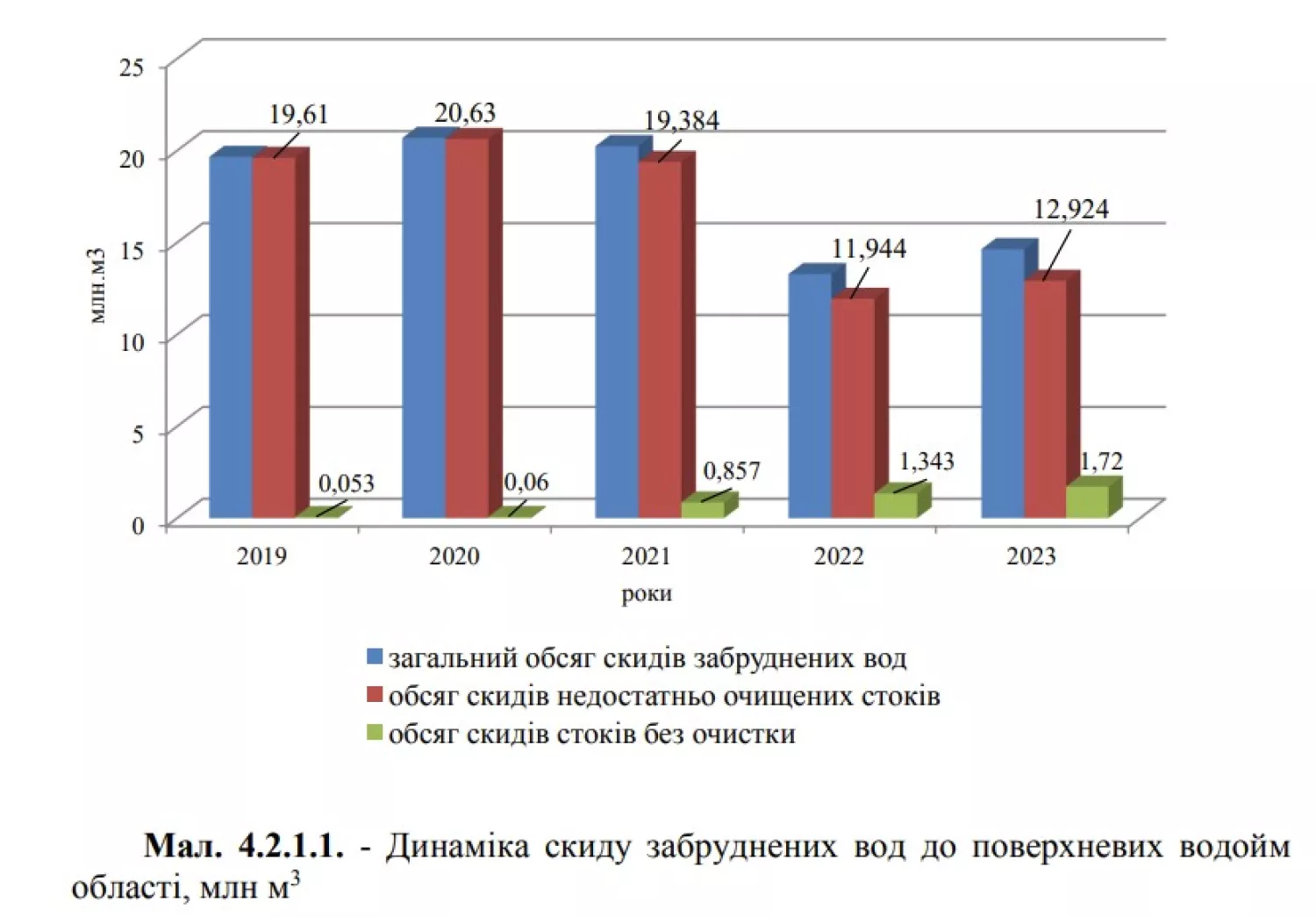 Dynamics of polluted water discharge into water bodies. Graph from the report on the state of the environment in Mykolaiv region
Dynamics of polluted water discharge into water bodies. Graph from the report on the state of the environment in Mykolaiv region«All the impacts that can be made on the river include the use of water for irrigation and energy needs. For example, the use of the Southern Bug for cooling. After reactors are cooled, water is characterised by an increase in temperature and under-realisation, especially in terms of sulphates. In addition, let's not forget that a lot of wastewater is discharged into the river, either treated or not treated at all, and this also affects its condition. It is also washed off the fields when fertilisers and pesticides are used, and so on. All these processes will affect its condition», adds Inna Tymchenko.
What is in the water supplied to the residents of Mykolaiv region?
As already mentioned, the geographical location of the region and human activity directly affect the quality of water that is then supplied to users. But people should not drink contaminated water. Before delivering it to the consumer, water utilities or other organisations responsible for water supply must purify it to ensure that it meets the State Sanitary Standards (DSanPiN 2.2.4-171-10).
The State Service of Ukraine for Food Safety and Consumer Protection, which inspects water at water supply and sewage facilities, provided NikVesti with data on water testing for previous years.
In 2023, experts examined water samples from 339 centralised water supply facilities (water pipelines) and 346 decentralised water supply facilities (255 mine wells and 91 bottling points and pump rooms). A total of 564 drinking water samples were analysed, of which 249 samples (44.1%) did not meet microbiological standards and 428 samples (75.9%) did not meet sanitary and chemical standards.
In 2024, laboratory tests of water were carried out at enterprises that supply drinking water to the public but did not independently test the water quality. Out of 335 samples, 140 samples (41.8%) did not meet microbiological indicators, and 268 samples (80.0%) did not meet sanitary and chemical indicators. At bottling points, pump rooms, and mine wells, out of 114 water samples collected, 26 samples (22.8%) did not meet the requirements for microbiological indicators and 50 samples (44.0.2%) did not meet the requirements for sanitary and chemical indicators.
Most of the water samples revealed violations in terms of dry residue, sulphates, water hardness, and chlorides. But let's understand what these are.
Sulphates and chlorides are salts contained in water. Sulphates can affect the taste of water and cause stomach irritation in high concentrations, while chlorides can cause corrosion of pipes. In Ukraine, the maximum permissible level for each of these compounds is 250 mg/l.
The hardness of water depends on the content of calcium and magnesium salts. If their concentration exceeds the norm (up to 7 mmol/dm³ according to the State Sanitary Standards), the water is considered hard and can be harmful. It has a negative impact on skin and hair, worsening their condition. As for the dry residue in drinking water, it is the amount of dissolved mineral and organic substances that remain after evaporation of water. Its standard for drinking water is up to 1000 mg/l.
According to environmentalist Inna Tymchenko, the overall mineralisation and hardness of water can affect the kidneys and cause stones.
«When there are a lot of salts in water, they can be retained in the body. There is also information that a large amount of salts can affect the intestines and cause indigestion», she notes.
However, chemical water pollution, or pollution with heavy metals, nitrates and other toxic substances, can have a greater impact on the body. This is one of the threats in times of war.
«Currently, during the hostilities, a large amount of arsenic is being detected in the soil, in the areas of shelling, after the Kakhovka hydroelectric power station, and in the soil and surface water. As well as other heavy metals that can eventually get into groundwater. They are currently in a binding state. Even on heavily shelled fields, these metals are unlikely to migrate into groundwater. This is a long process that can be expected if there is no soil renewal and the use of cover crops to extract these metals», adds Inna Tymchenko.
 A view of the mouth of the Pivdennyi Buh River, near the village of Lupareve in Mykolaiv Oblast. Photo by Ukrainer
A view of the mouth of the Pivdennyi Buh River, near the village of Lupareve in Mykolaiv Oblast. Photo by UkrainerArsenic in the water of the Halytsynove community
One of the hazardous elements, arsenic, was found in the drinking water of the Halytsynove community in Mykolaiv region. Regular consumption of such water can cause serious health problems.
Due to the development of industry, the WHO has classified arsenic as one of the 10 most dangerous chemicals. The maximum permissible concentration for drinking water is set at 0.01 mg/l (10 µg/l). Scientists have proven that arsenic is a carcinogen that can cause cancer, leukaemia and organ damage. It also harms the skin by causing pigmentation, which can appear after a year of drinking water with a concentration of more than 0.4 mg/l. In Ukraine, there is no monitoring of diseases associated with exceeding arsenic standards in drinking water, so it is difficult to talk about the safety of the situation.
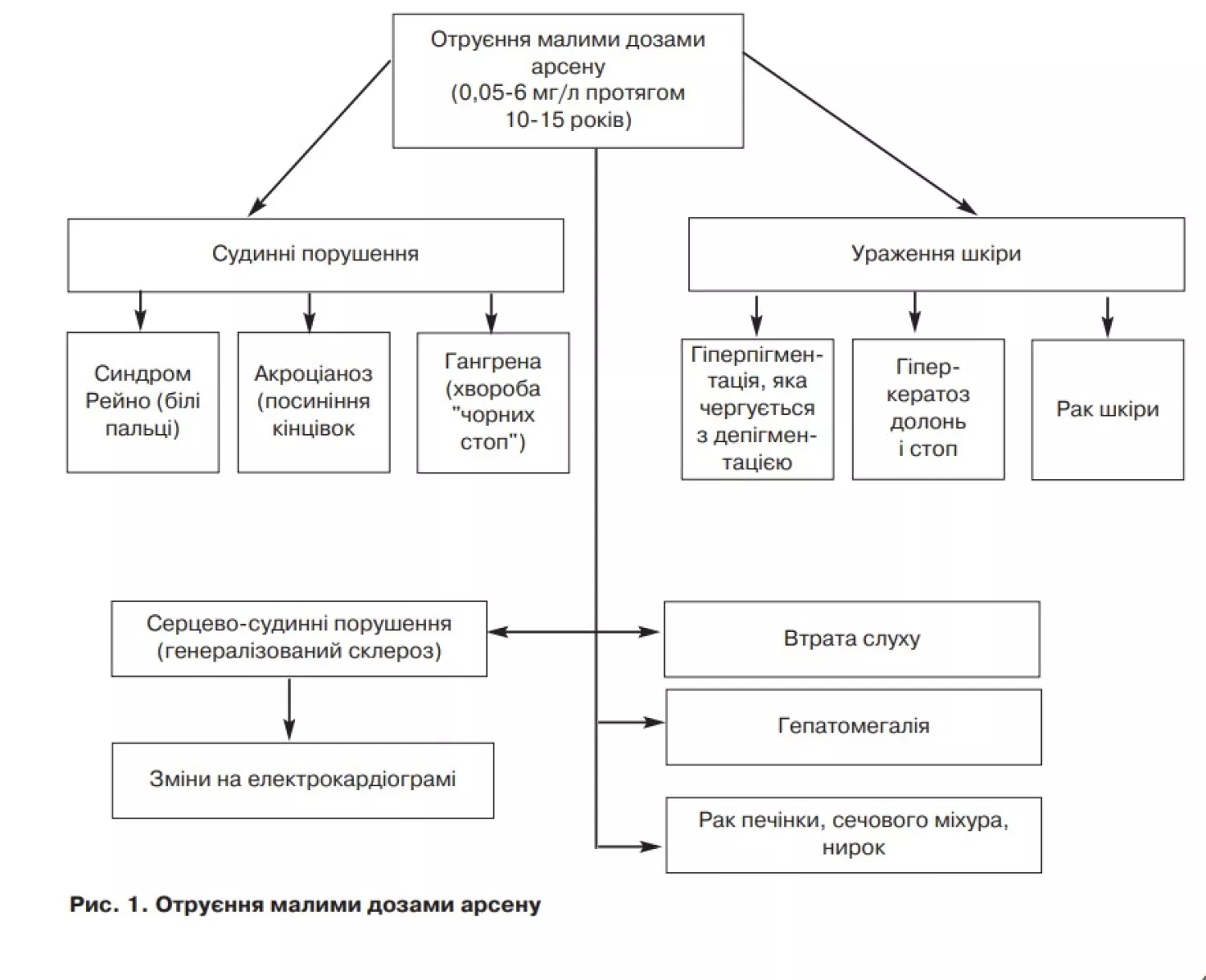 Administration of small doses of arsenic. Illustration from the scientific article «Arsenic in food and rations and its toxicity»
Administration of small doses of arsenic. Illustration from the scientific article «Arsenic in food and rations and its toxicity»In September 2023, the State Service of Ukraine for Food Safety and Consumer Protection detected arsenic in the water of the Halytsynove community. Then, in November, experts from the Mykolaiv Regional Centre for Disease Control and Prevention of the Ministry of Health took 13 water samples twice. According to the results of the research in the village of Lymani, two of the five water samples tested had arsenic concentrations that exceeded the maximum permissible concentration (MPC) by 1.1 and 1.2 times. Also, two water samples did not meet the standards for microbiological indicators.
In the village of Lupareve, arsenic exceeded the MPC by 1.7, 2.8 and 3.4 times in 3 samples out of 8 tested, and in 4 samples. In addition, all 8 water samples examined did not meet the standards for microbiological indicators.
Arsenic was also detected in water from the Halytsynove community in 2024. Water samples collected in February showed that the arsenic concentration in wells from the village of Lymany was 0.012 mg/dm3, in the village of Lupareve — 0.014 mg/dm3, and in two water samples from the water supply network, 0.012 mg/dm3 and 0.017 mg/dm3 were detected.
Also last year, the Mykolaiv Regional Centre for Disease Control and Prevention of the Ministry of Health recorded arsenic in the village of Lupareve, where its concentration in different samples exceeded the maximum permissible level by 1.1 to 3.6 times.
In addition, other indicators of water in the community are of concern. In water samples from the villages of Lupareve and Lymany in 2024 and 2025, total coliforms (bacteria that are an indicator of faecal or other organic pollution), E. coli (bacteria that originate from faecal pollution, most often from sewage or manure) and enterococci (also indicative of faecal pollution) were recorded. And if such water is not disinfected, it can cause serious health problems.
However, Nataliia Panashii, the head of the villages of Lymany and Lupareve, notes that the community has no problems with water supply. According to her, the villagers have a centralised water supply with technical water. In addition, water treatment systems have been installed in the settlements. She also assured that people do not complain about the quality of water.
«I have never believed this information because I have no proof of these analyses. They could be fake. I don't know where they get this water. Today, we have water treatment plants in every village. People come there and get free water. We have technical water flowing through the pipes», says the village headman.
To find out more about the water situation in the villages and the community NikVesti contacted the head of the local utility company «Ukrainian Agricultural Enterprise». The chief engineer of the enterprise, Ivanna Zvonik, also assured us that there were no problems with water in the community. According to her, arsenic was indeed detected, but it is now gone.
«We have not yet carried out departmental control of the wells. It is scheduled for April. The regional sanitary and epidemiological station (Mykolaiv Regional Centre for Disease Control and Prevention of the Ministry of Health, — note) They have to provide us with the results. They checked the Lymany. Over the phone, they told us that only the water in the grocery store was bad, as usual after winter, and that arsenic was not found. But these are just words, I can't confirm them with a document yet. And then we will conduct water tests. We will schedule them, because we have six settlements, analyses are paid for, each analysis costs 5-6 thousand. Only 50 thousand will be triple for departmental control. It is conducted once a quarter», she says.
At the request of NikVesti, the Mykolaiv Regional Centre for Disease Control and Prevention of the Ministry of Health provided the results of a water analysis done in 2025. In the village of Lymani, water samples were taken from two water intake wells and one sample from the water supply network. Arsenic was not found in the water, but the water from the water supply network does not meet sanitary requirements, with coliforms and E. coli still present.
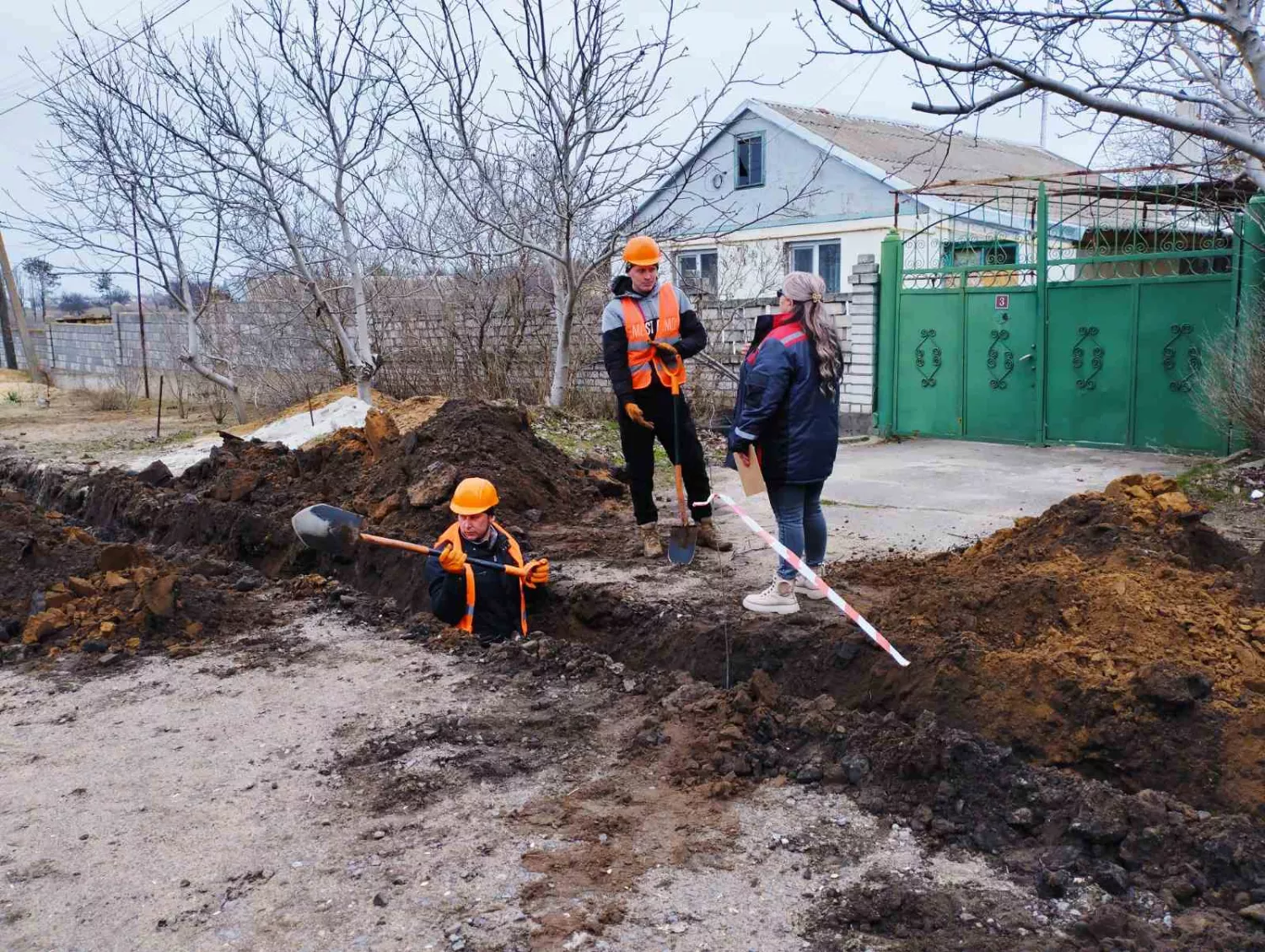 Replacement of water supply systems in the Halytsynove community. Photo from the official community page
Replacement of water supply systems in the Halytsynove community. Photo from the official community pageIt is worth noting that there are currently no analysis results from the village of Lupareve, and it is unknown whether arsenic is still present there. In addition, the community does not know how arsenic got into the water, as no studies have been conducted.
«There was no such research. These studies should be conducted by specialised laboratories, specialised bodies.... We cannot say what influenced this. We are not an organisation that can conduct research. We carry out departmental control in laboratories that we like or not, but we have to trust», adds Ivanna Zvonik.
In general, arsenic can get into drinking water from natural and artificial sources. Natural sources are when water is saturated with elements from the rocks it passes through. This is especially common in areas with iron ore deposits. It can also get into the water through human activity, such as the use of agricultural pesticides and fertilisers, and industrial emissions, including from the production of dyes, wood preservatives and ore processing.
The problem of water supply in Domanivka
In addition to problems with the composition of water, many areas in Mykolaiv region have experienced a drop in water levels in wells and boreholes. Domanivka also faced this problem. However, they have now started to address this issue.
Denmark has recently approved the sixth support package for Mykolaiv region in the amount of DKK 200 million (over EUR 26 million). Among the projects to be funded is the provision of quality water to the residents of Domanivka.
Oleksandra Sokhan, deputy head of the Domanivka village council, said that the community is currently preparing to implement a water pipeline project. The water is to be brought from the village of Zbroshkove, Bashtanka district.
«The water pipeline stretches from the village of Zbroshkove, where there is an underground lake, to Domanivka. Zbroshkove is already supplied from this well. Now we are extending it to Domanivka. And then there will be a branch in Domanivka itself. There will be an additional reservoir and the networks will be interconnected. There will be two additional wells in Domanivka that meet the requirements for drinking water, and they will also be used to fully supply Domanivka with quality water. We are already starting to replace water pipes in the streets, replacing old cast iron pipes with new plastic ones. Last year, UNICEF provided us with materials and water pipes. We will invest in the repair of the existing water supply network», she said.
According to Oleksandra Sokhan, the water supply line to Domanivka will be 7 kilometres long. Then there will be a branch in the village.
«We have a centralised water supply in Domanivka, but the wells we have do not meet water quality requirements. Over the past two years, the water level in our wells has dropped, and we don't have enough water in the summer. And the water from Zbroshkove village will solve the issue of permanent water supply for the population», she added.
Reverse osmosis systems are the way to clean water for the population
Currently, the largest project in Mykolaiv region aimed at providing clean water to the population is the construction of a water supply system for Mykolaiv. The project involves laying a 65-kilometre water pipeline from Nova Odesa to Mykolaiv.
The construction includes a new water intake station, two pumping stations and the laying of a water pipeline directly to Mykolaiv's wastewater treatment plant. Completion is scheduled for August 2025. The new water pipeline should provide the city with water and solve the problem of water shortages.
While the construction is underway, the city is supplied with drinking water from underground sources — 169 artesian wells (134 of which were commissioned in 2022-2024). In addition, the city has 246 reverse osmosis water treatment plants.
Inna Tymchenko, an associate professor at the Department of Landscape Gardening and Ecology at Luhansk Taras Shevchenko National University, says that reverse osmosis plants are now the only option for people who take water from wells and want to purify it. It involves a process where water passes through a special membrane under high pressure. The membrane retains salts, bacteria, impurities and other contaminants, allowing only pure water to pass through. This method effectively provides high-quality drinking water.
«In Mykolaiv, we also have all groundwater with sulphates and chlorides and mineralised water, and the water goes through reverse osmosis and is purified through a pressure membrane, leaving all the salts there. If there is no heavy metal contamination in the water, then it is possible to think about using this system to make the water of high quality in terms of its composition. But in general, a sufficiently powerful reverse osmosis unit is used for demineralisation, and the water loses a lot of minerals, so in order to make it physiologically complete, it needs to be slightly supplemented with minerals. In reverse osmosis, this involves an additional mineralisation unit, or you can mix highly mineralised water with ultra-fresh water», says the environmentalist.
Given the gradual decline of fresh water in rivers, Mykolaiv region can draw on the experience of Israel, which is a world leader in solving the problem of drinking water supply, especially in conditions of water shortage. Thanks to innovative technologies and an integrated approach, the country successfully provides its residents with water even in arid regions.
One of the key solutions is seawater desalination. Israel has built modern plants that turn salt water into drinking water. For this purpose, they use the reverse osmosis method. This makes it possible to provide a significant part of the population with high-quality water. In addition, the country actively uses water reuse technologies. For example, treated wastewater is used to irrigate agricultural land, which reduces the burden on natural sources.
What to expect in the future?
Every year, the climate in the region changes, with less rainfall, shallower rivers, and a falling groundwater level. Therefore, it is necessary to take action now. Particular attention should be paid to the state of rivers, as they are an important source of water supply. In order to preserve rivers, it is necessary to: clean the riverbeds from debris and silt, prevent pollution by sewage, protect natural floodplains that help restore water reserves, and plant plants along the banks to prevent soil erosion. It is very important to monitor compliance with environmental regulations and try to minimise the impact of industry and agriculture.
In order to protect water resources, Ukraine has approved River Basin Management Plans. This is an important document that takes into account European experience and sets out the main measures to preserve rivers. It is part of Ukraine's European integration process and an important step towards environmental sustainability.
Alona Kokhanchuk, NikVesti
